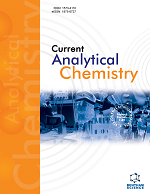
Full text loading...
Rubus alceifolius poir leaves are a widely distributed medicinal plant material in the Eastern Hemisphere. However, there has been no report regarding their chemistry until now.
Fresh R. alceifolius leaves were treated using a set of experimental protocols to prepare a lyophilized aqueous extract. Subsequently, the extract was qualitative and quantitatively analyzed using the database-affinity ultra-high-performance liquid chromatography-quadrupole-Exactive-Orbitrap-tandem mass spectrometry (UHPLC-Q-Exactive-Orbitrap-MS/MS) technology.
Based on MS/MS elucidation and comparison with the database in UHPLC-Q-Exactive-Orbitrap-MS/MS apparatus, 33 compounds were qualitatively identified. Especially, 12 isomers were strictly distinguished, including apigenin vs. 2'-hydroxydaidzein, luteolin 7-O-glucuronide vs. scutellarin, (+) catechin vs. (-) epicatechin, 3-O-caffeoylquinic acid vs. 4-O-caffeoylquinic acid vs. 5-O-caffeoylquinic acid, and 3,4-O-dicaffeoylquinic acid vs 3,5-O-dicaffeoylquinic acid vs. 4,5-O-dicaffeoylquinic acid. In addition, 21 non-isomeric compounds, such as ellagic acid and gallic acid, were also found under negative or positive ion models. The quantitative analysis suggested that ellagic acid was found to be of the highest level (133.00 ± 3.50 µg/g), while (+)-4-cholesten-3-one was calculated to be of the lowest level (0.035 ± 0.0050 µg/g).
These findings will help to understand the substance basis of the traditional medicinal functions of R. alceifolius leaves and to find their suitable quality markers.

Article metrics loading...

Full text loading...
References


Data & Media loading...
Supplements

